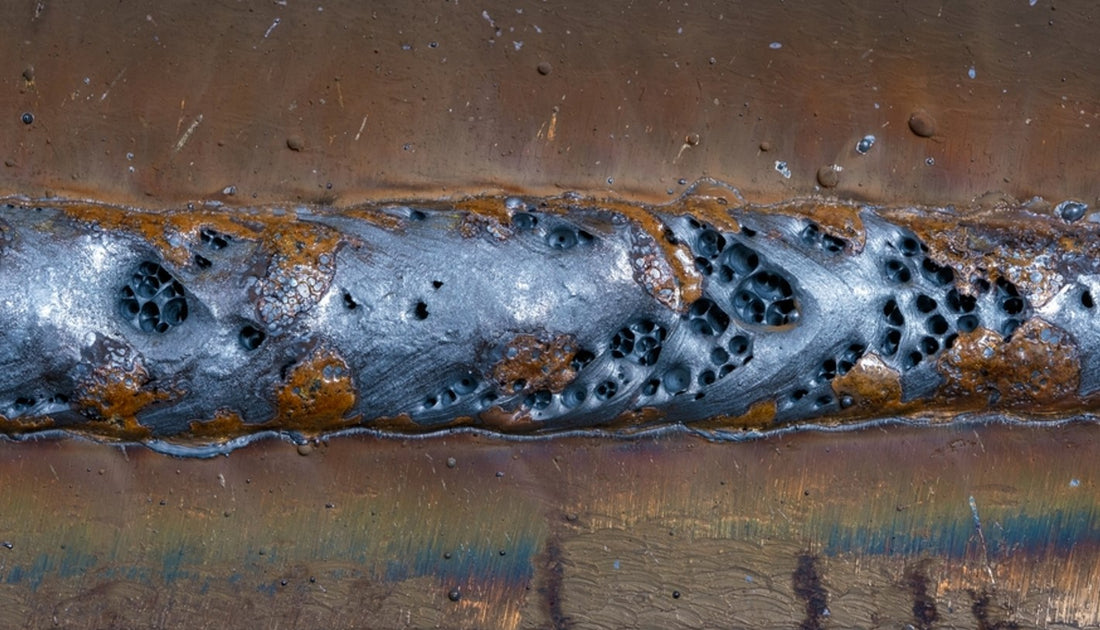Untangling the Secret of Porosity in Welding: Tips for Decreasing Problems and Making Best Use Of Quality
In the elaborate globe of welding, porosity stays a persistent difficulty that can considerably influence the quality and honesty of welded joints. Recognizing the variables that add to porosity development is essential in the pursuit of remarkable welds. By unraveling the mystery of porosity and carrying out effective methods for issue reduction, welders can elevate the requirements of their job to achieve exceptional top quality end results. As we look into the depths of porosity in welding, discovering the tricks to its prevention and control will be vital for specialists looking for to understand the art of top quality weldments.
Recognizing Porosity in Welding
Porosity in welding, an usual concern experienced by welders, refers to the presence of gas pockets or gaps in the bonded product, which can jeopardize the integrity and high quality of the weld. These gas pockets are normally entraped throughout the welding process due to numerous aspects such as improper shielding gas, infected base products, or wrong welding criteria. The formation of porosity can compromise the weld, making it vulnerable to cracking and corrosion, inevitably leading to structural failures.
Comprehending the origin of porosity is critical for welders to properly avoid its occurrence. By recognizing the relevance of preserving correct gas protecting, guaranteeing the sanitation of base products, and optimizing welding setups, welders can considerably decrease the chance of porosity development. Additionally, using techniques like pre-heating the base material, utilizing proper welding methods, and conducting comprehensive examinations post-welding can further assist in reducing porosity issues. Generally, a thorough understanding of porosity in welding is vital for welders to produce premium and sturdy welds.

Common Root Causes Of Porosity
When evaluating welding procedures for possible quality problems, recognizing the common causes of porosity is crucial for maintaining weld integrity and preventing structural failings. Porosity, defined by the presence of tooth cavities or gaps in the weld steel, can significantly compromise the mechanical buildings of a welded joint.
Another common reason for porosity is the visibility of dampness and impurities externally of the base steel or filler product. When welding materials are not properly cleansed or are revealed to high degrees of humidity, the evaporation of these impurities during welding can produce voids within the weld bead. In addition, welding at incorrect specifications, such as excessively high traveling speeds or currents, can generate extreme turbulence in the weld swimming pool, trapping gases and triggering porosity. By dealing with these common reasons via appropriate gas shielding, product preparation, and adherence to optimum welding parameters, welders can decrease porosity and improve the quality of their welds.
Techniques for Porosity Avoidance
Implementing efficient safety nets is vital in reducing the event of image source porosity in welding processes. One method for porosity avoidance is making certain proper cleansing of the base steel prior to welding. Pollutants such as oil, oil, corrosion, and paint can result in porosity, so complete cleansing using proper solvents or mechanical approaches is important.

Making use of top quality filler materials and securing gases that are ideal for the base steel and welding process can significantly decrease the danger of porosity. In addition, keeping correct welding specifications, such as voltage, existing, take a trip rate, and gas flow rate, is crucial for porosity avoidance.
Moreover, using correct welding methods, such as preserving a consistent traveling rate, electrode angle, and arc length, can assist avoid porosity (What is Porosity). Sufficient training of welders to ensure they follow ideal practices and quality assurance treatments is likewise essential in decreasing porosity problems in welding

Finest Practices for High Quality Welds
One secret technique is keeping correct cleanliness in the welding location. Extensively cleaning up the workpiece and bordering area prior to welding can aid mitigate these concerns.
An additional ideal practice is to meticulously choose the proper welding parameters for the specific materials being signed up with. Correct criterion option makes sure ideal weld penetration, combination, and overall quality. Using high-grade welding consumables, such as electrodes and filler metals, can considerably impact the last weld top quality.
Importance of Porosity Control
Porosity control plays a vital role in making sure the stability and high quality of welding joints. Porosity, defined by the presence of dental caries or spaces within the weld metal, can significantly jeopardize the mechanical residential properties and architectural honesty of the weld. Extreme porosity deteriorates the weld, making it much more susceptible to fracturing, rust, and overall failing under operational lots.
Effective porosity control is crucial for preserving the wanted mechanical homes, such as toughness, ductility, and strength, of the bonded joint. What is Porosity. By minimizing porosity, welders can improve the general top quality and dependability of the weld, ensuring that it satisfies the efficiency needs of the intended application
Moreover, porosity control is essential for achieving the wanted aesthetic look of the weld. Extreme porosity not just damages the weld but likewise diminishes its aesthetic appeal, which can be vital in sectors where visual appeals are necessary. Correct porosity control techniques, such as making use of the proper shielding gas, controlling the welding specifications, and making sure correct sanitation of the base products, are essential for producing top quality welds with marginal issues.

Final Thought
To conclude, porosity site web in welding is an usual issue that can compromise the top quality of the weld. see this page By recognizing the sources of porosity and implementing appropriate avoidance methods, welders can lessen issues and attain better welds. It is necessary to regulate porosity in welding to ensure the stability and stamina of the end product. Implementing ideal techniques for porosity control is crucial for attaining ideal welding outcomes.
Comments on “What is Porosity in Welding: Important Tips for Achieving Flawless Welds”